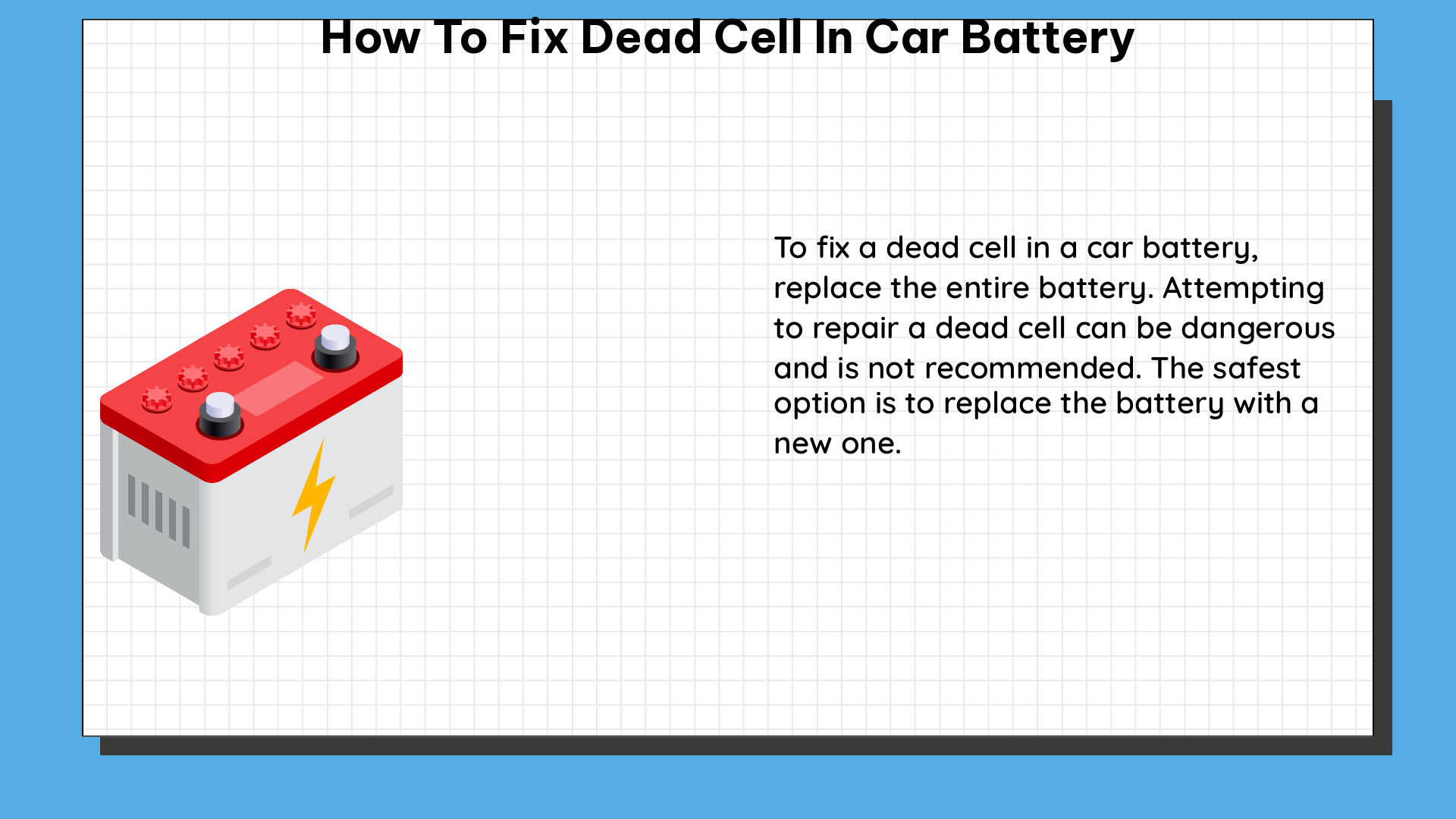Fixing a dead cell in a car battery can be a cost-effective solution to extend the life of your vehicle’s power source. This comprehensive guide will walk you through the step-by-step process of diagnosing and reviving a dead cell, providing you with the technical details and quantifiable data points necessary to tackle this task successfully.
Measuring Battery Voltage
The first step in fixing a dead cell is to measure the battery’s voltage using a multimeter. A fully charged car battery should have a voltage of 12.73V, while a battery with a 30% charge will have a voltage of 11.81V. If the battery’s voltage is significantly lower than these values, it’s likely that one or more cells have failed.
Inspecting the Battery Cells

Once you’ve measured the battery voltage, it’s time to inspect the individual cells. Remove the battery’s lid and take a close look at the fabric inside each cell. If you see brown fabric with white lumps, the battery is likely sulfated, and your chances of reviving it are low. However, if the fabric appears white and dry, you can proceed to the next step.
Adding Water to the Cells
Using a syringe, carefully add distilled water to each cell, filling them up to the appropriate level. Gently shake the battery to help the fabric absorb the water, and let it rest for 10 minutes. This step helps to rehydrate the cells and prepare them for the charging process.
Turning on the Power Supply Unit (PSU)
Connect your multimeter in series with the charger and the battery to monitor the current draw. Set the multimeter to 10A and observe the readings. A dead battery will typically draw between 100-200mA. Set your PSU to 14V or connect your charger and let the battery charge for a day or two. After this time, the battery should be drawing 500-1000mA, indicating that the charging process is underway.
Calculating the Battery’s Capacity
To determine the battery’s capacity, use the following formula: Ah capacity = Amps that your battery is drawing x hours. This will help you estimate how long the battery needs to charge to reach full capacity.
Testing the Revived Battery
After leaving the battery to charge for the calculated time, disconnect it from the charger and connect it to a car headlight or any 12V bulb. The voltage of the battery should not drop lower than 12V. If it does, the battery is likely damaged beyond repair.
Tools and Equipment Needed
To fix a dead cell in a car battery, you’ll need the following tools and equipment:
- Multimeter
- Adjustable PSU or taper charger
- Distilled water
- Rubber gloves
- Screwdriver
- Flashlight
- Super glue
- Paper towel
- Syringe
By following this comprehensive guide and using the right tools and equipment, you can effectively diagnose and revive a dead cell in your car battery, saving you the cost of a replacement and extending the life of your vehicle’s power source.
References:

The lambdageeks.com Core SME Team is a group of experienced subject matter experts from diverse scientific and technical fields including Physics, Chemistry, Technology,Electronics & Electrical Engineering, Automotive, Mechanical Engineering. Our team collaborates to create high-quality, well-researched articles on a wide range of science and technology topics for the lambdageeks.com website.
All Our Senior SME are having more than 7 Years of experience in the respective fields . They are either Working Industry Professionals or assocaited With different Universities. Refer Our Authors Page to get to know About our Core SMEs.